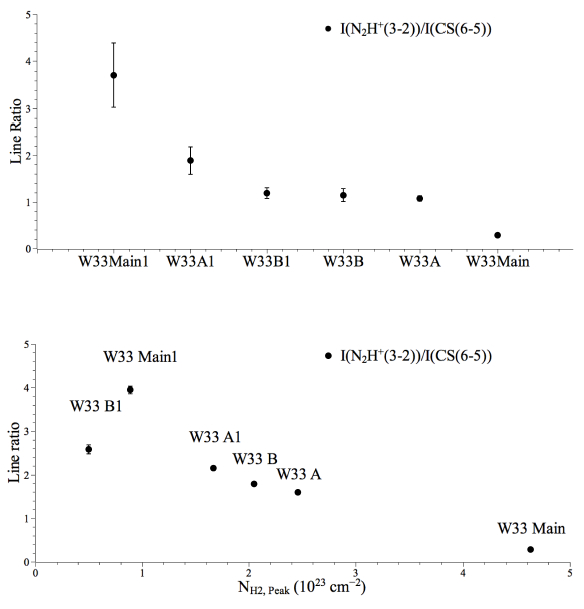| EPoS Contribution |
|
Testing the N2H+/CS abundance ratio as a chemical clock in the star-forming complex W33
Katharina Immer ESO, Garching, DE | |
| The W33 complex is the ideal object to study high-mass star formation in different stages in a small area on the sky. The six star forming regions in this complex are in the evolutionary stages: early protostellar phase (W33 Main1), protostellar phase (W33 A1, W33B1), hot core phase (W33 A, W33B), and HII region phase (W33Main). From previous APEX observations, we determined the integrated intensity ratio N2H+(3-2)/CS(6-5) in these six sources. This ratio follows a clear trend as a function of the evolutionary stage of the targets and is a good candidate for a "chemical clock". In April-June 2016, the N2H+(2-1) and CS(4-3) transitions will be observed with the new SEPIA receiver at the APEX telescope towards the six clouds in the W33 area. With these observations, we will determine the abundances of these molecules and test the abundance ratio N2H+/CS as a chemical clock. | |
 | |
| Caption: Integrated intensity ratios N2H+(3-2)/CS(6-5) plotted versus the evolutionary sequence of the six W33 sources from the early protostellar (W33 Main1) to the HII region phase (W33 Main) in the upper panel and their H2 peak column densities in the lower panel (Immer et al. 2014). | |
| Collaborators: S. Zahorecz, ESO, DE R. Galvan-Madrid, UNAM, MX H. Liu, ESO, DE L. Testi, ESO, DE P. Caselli, MPE, DE |
Key publication
Suggested Session: Massive Star Formation |

